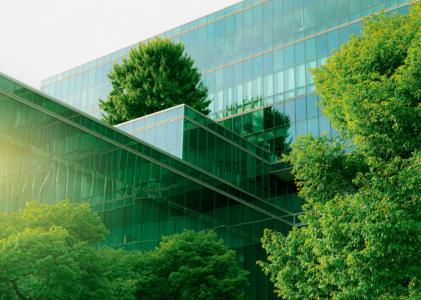Sustainable architecture is the new buzzword in the world of construction. With the ever-increasing focus on reducing our carbon footprint, sustainable architecture has taken center stage in the construction industry. The future of sustainable architecture in construction seems bright and promising. Several architects, builders, and designers are exploring various ways to make buildings more eco-friendly, resource-efficient, and sustainable. In this blog post, we will discuss the future of sustainable architecture in construction, its benefits, and what the industry is doing to make it a reality.
The growth of the green building market
The green building market has grown exponentially in recent years. The global green building market is expected to reach $260 billion by 2023. More and more construction firms are offering sustainable building options to their clients. The biggest advantages of sustainable buildings are energy efficiency, resource preservation, and lower operational costs. Green buildings are becoming increasingly popular among homeowners, businesses, and communities.
Energy efficiency
Sustainable architecture helps reduce energy consumption in buildings. Designers focus on creating buildings with better insulation, ventilation, and efficient lighting systems. This results in lower energy bills, and a decrease in carbon emissions. Sustainable architecture solutions like solar panels and rainwater harvesting systems also contribute to energy efficiency.
Innovative materials
Innovative materials are playing a significant role in sustainable architecture. Sustainable and eco-friendly materials like bamboo, hempcrete, compressed earth bricks, and recycled materials are becoming increasingly popular. These materials are cost-effective, durable, and have a lower carbon footprint than traditional construction materials. Sustainable architecture encourages the use of recycled materials to reduce waste and preserve resources.
Smart buildings
Sustainable architecture involves integrating smart technology in buildings to reduce energy waste. This includes controls, automation, and monitoring systems like light and temperature sensors. Smart buildings are more energy-efficient and can operate at optimal levels. These systems also provide real-time data on energy consumption, giving a clear picture of the building’s energy use.
Ecology and environment
Sustainable architecture emphasizes the ecology and environment surrounding the building. The goal is to design buildings that coexist with the natural environment. This includes features like green roofs, rain gardens, and bioswales. Green roofs help absorb rainwater and prevent runoff, while bioswales filter rainwater and reduce pollution. Sustainable architecture involves designing buildings with eco-friendly spaces and materials that promote a healthy and sustainable environment.
Conclusion
Sustainable architecture is the future of the construction industry. As the focus on reducing our carbon footprint grows, sustainable architecture will take center stage in the construction industry. It offers a range of benefits like energy efficiency, resource preservation, and lower operational costs. Sustainable architecture solutions like solar panels, rainwater harvesting systems, and innovative materials help reduce energy consumption and waste. The growth of the green building market is a testament to the increasing popularity of sustainable architecture. The future of sustainable architecture in construction seems promising. As more architects, builders, and designers embrace sustainable architecture, we can expect to see more eco-friendly, resource-efficient, and sustainable buildings in the near future.
For all your sustainable plumbing needs, don’t hesitate to reach out to Cedar Park Plumbing. Their team of experienced and knowledgeable professionals is ready to help you implement eco-friendly and resource-efficient solutions in your next construction project. Enjoy the benefits of sustainable architecture with our top-notch services. Contact Cedar Park Plumbing today and make a step towards a greener future.…




